These photos are from the Boon Khao Jee (บุญข้าวจี่) ceremony in Ban Hua Na, Amphoe Nong Ruea, Khon Kaen province on February 7-8, 2020. Thanks to Pra Kru Sathaphon Thammasan, Mae Turian, and Khun Pam for helping me out. For more information, there’s an explanation of Boon Khao Jee and an overview of heet sip-song, the twelve Isan merit-making traditions.
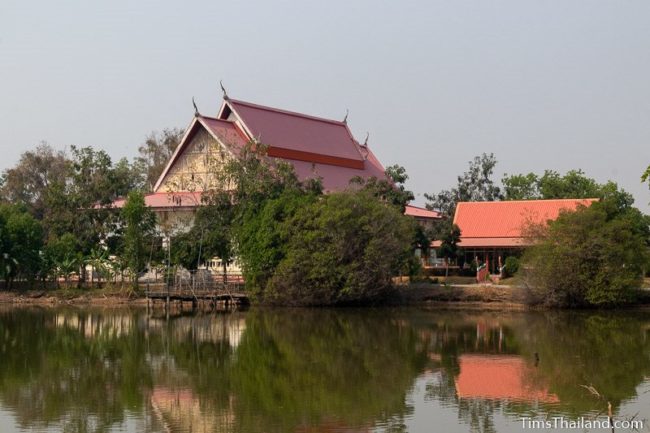
Preparation
The day before Boon Khao Jee was a mostly normal one at the village temple, Wat Jan. The only significant preparation for Boon Khao Jee was women making bai sii. It’s a slow process, so the women got started about 7.45am, even before the monks came to the sala for breakfast. They finished folding all ten bai sii just after noon.
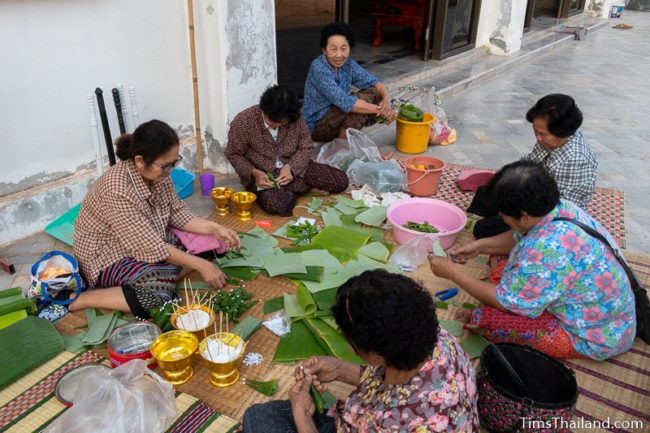
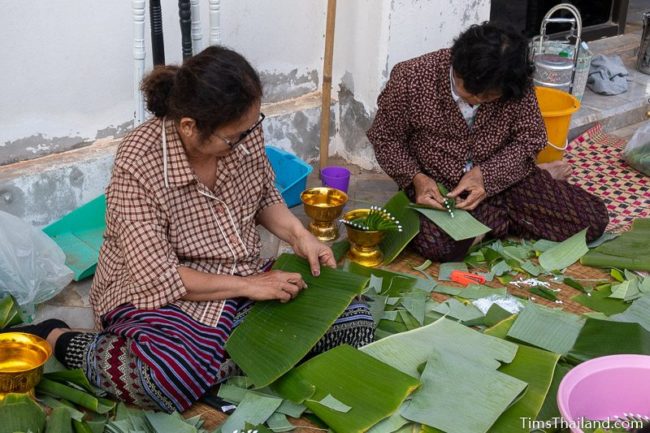
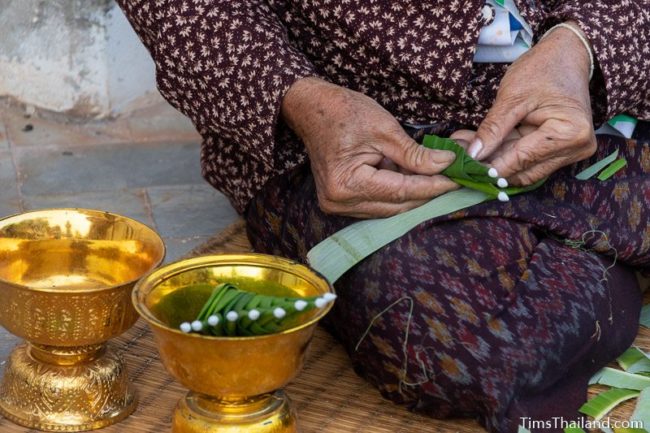
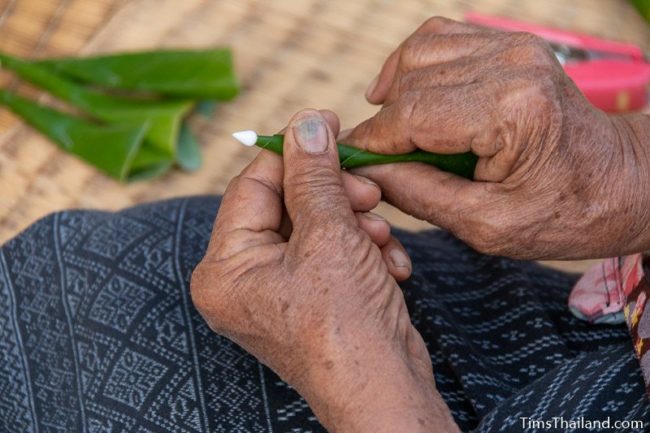
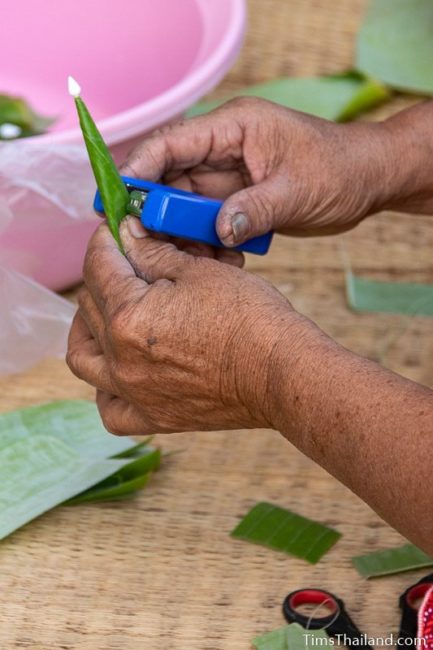
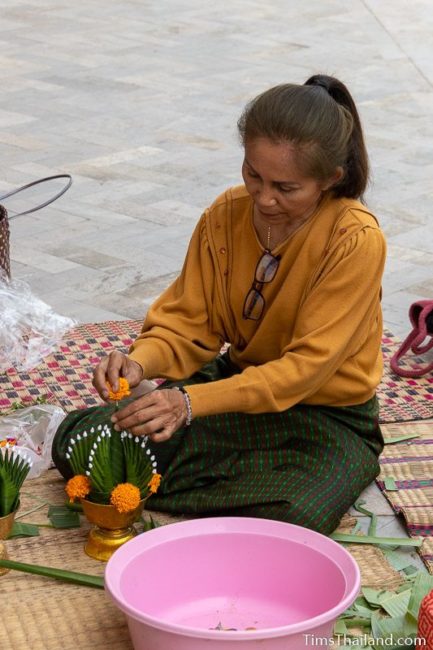
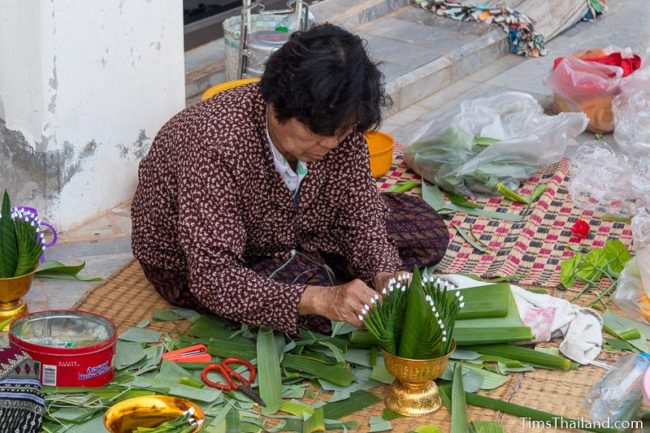
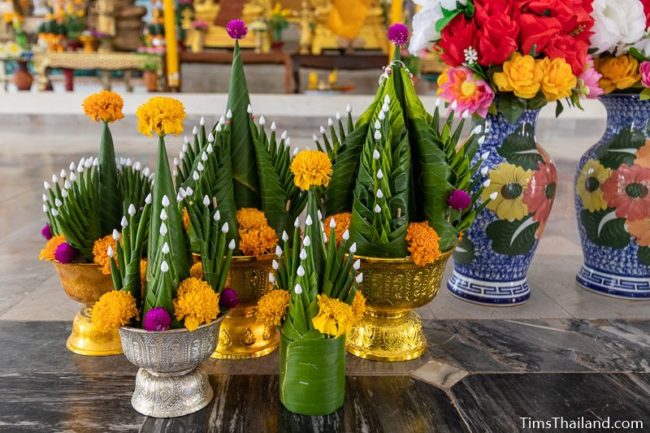
At home, some people made khao tom mat (sticky rice and some second ingredient, such as soybean or banana, steamed in a banana leaf) to give to the monks the next day.
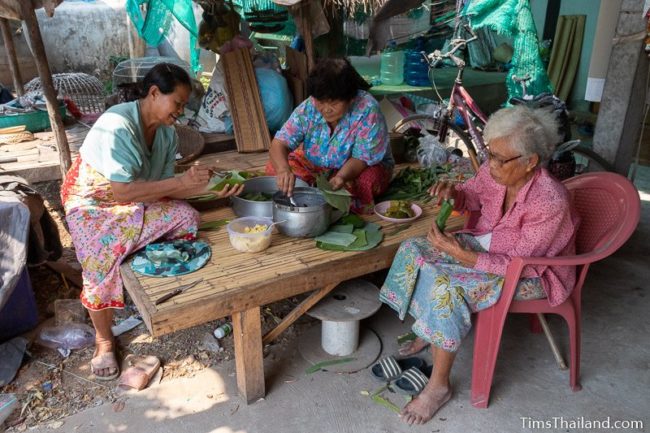
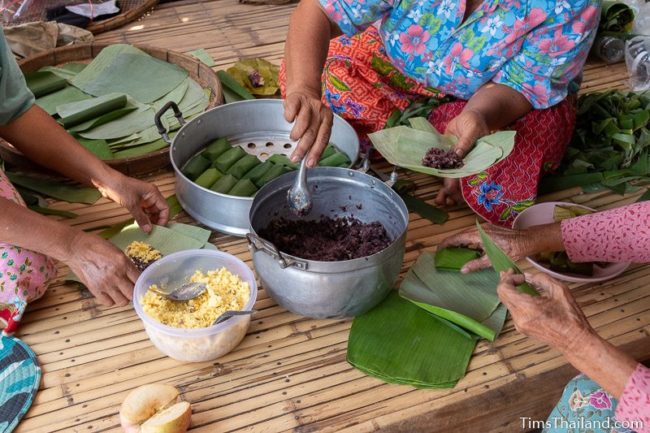
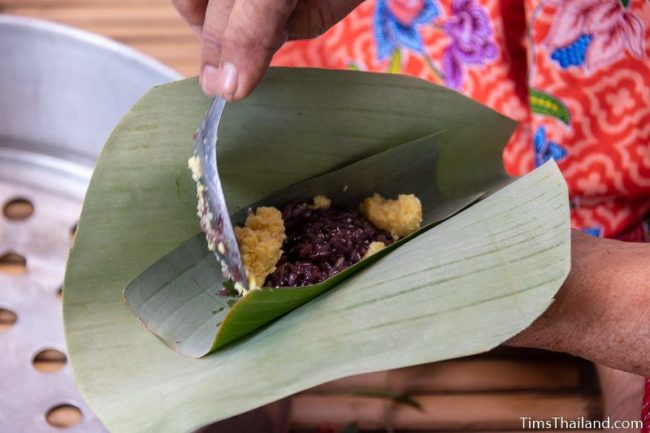
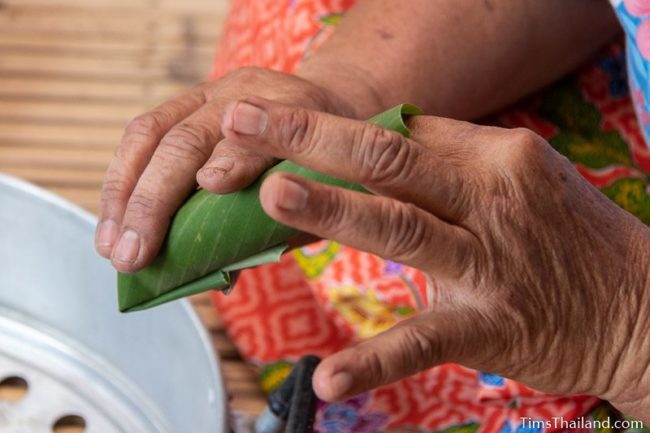
Boon Kum Khao Yai
“The Big Rice Heap Merit-Making Ritual,” also called Boon Khun Lan, is often celebrated as a large, important stand-alone festival to honor the spirits who helped the rice harvest. But other places, including this region, it’s a smaller, low-key affair combined with Boon Khao Jee.
During the day people brought bags of rice to the temple, which were poured onto the pile. It was a small rice heap this year because many locals lost their crops in last year’s drought; these people brought money instead.
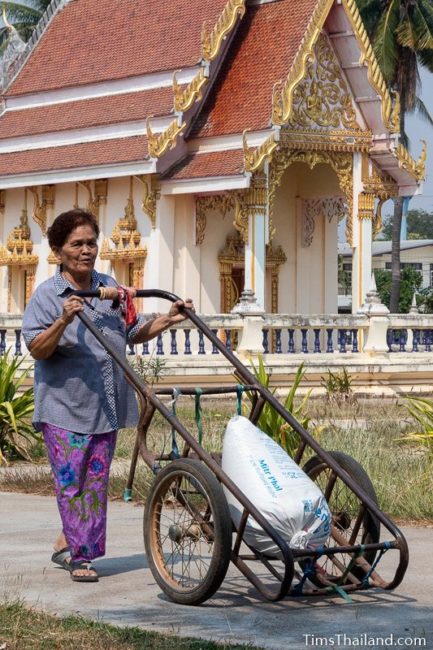
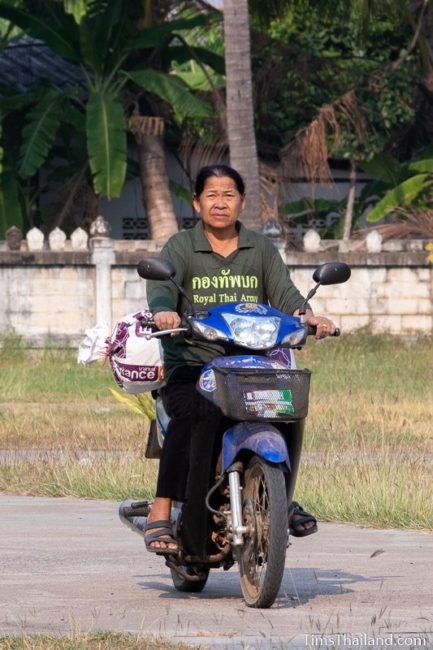
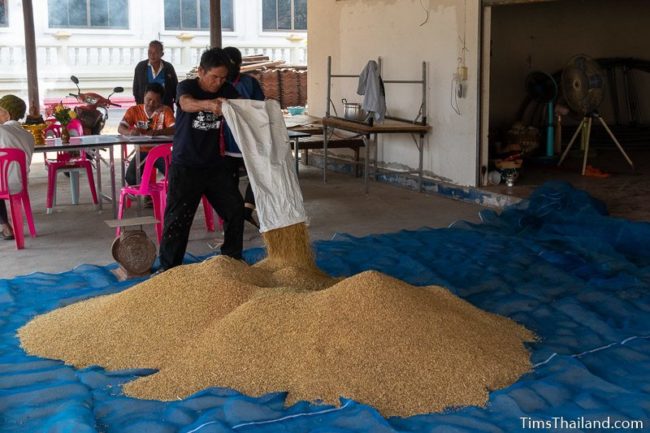
In the late afternoon people put bai sii and candles on the pile and ran sai sin sacred thread from it to the Buddhas and the monk platform inside the sala.
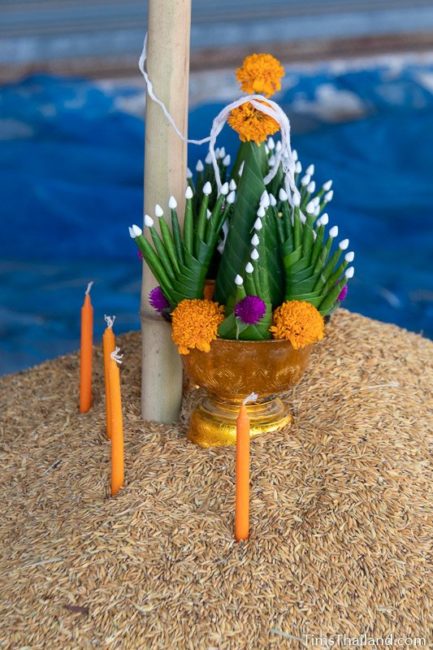
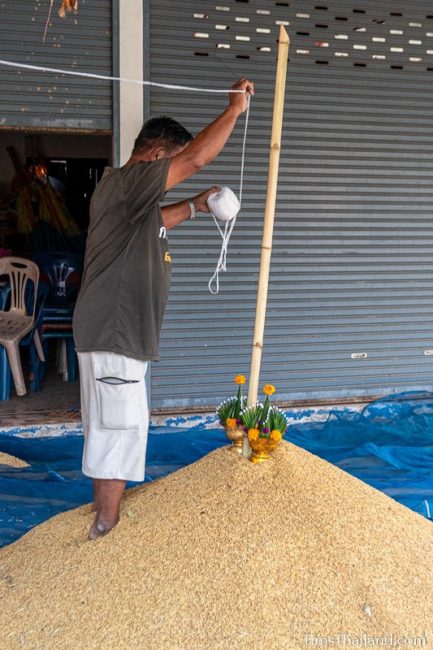
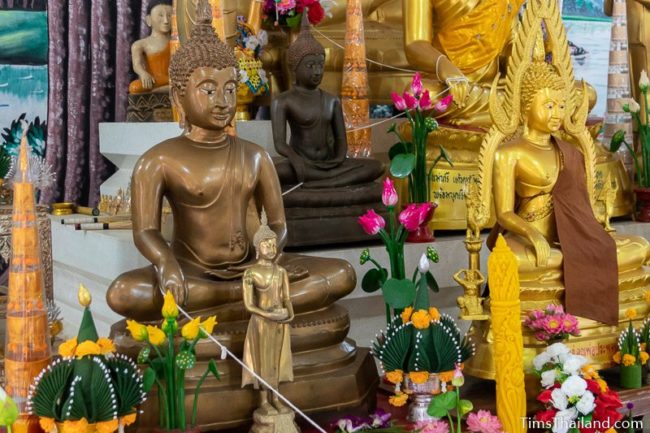
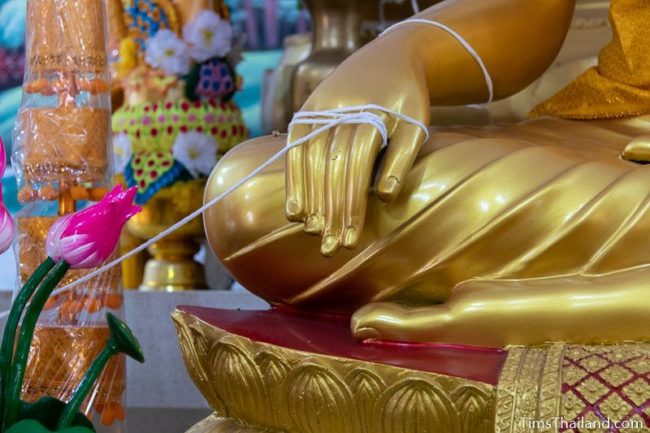
At 7pm the rice heap candles were lit and the monks started leading suat mon chants and prayers and talked about merit and dharma to a small (fewer than 30) group of people: not many came because there were two funerals that night.
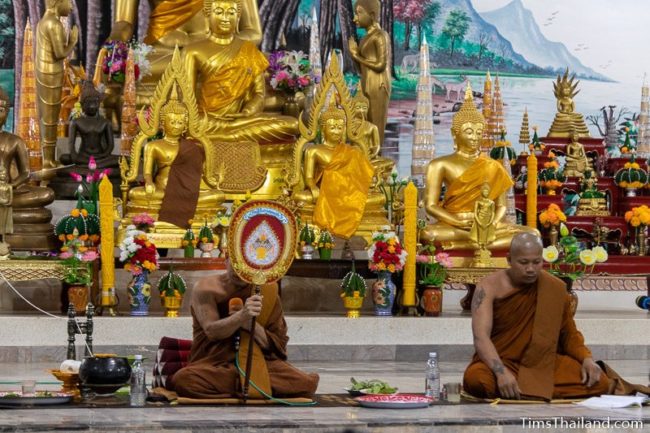
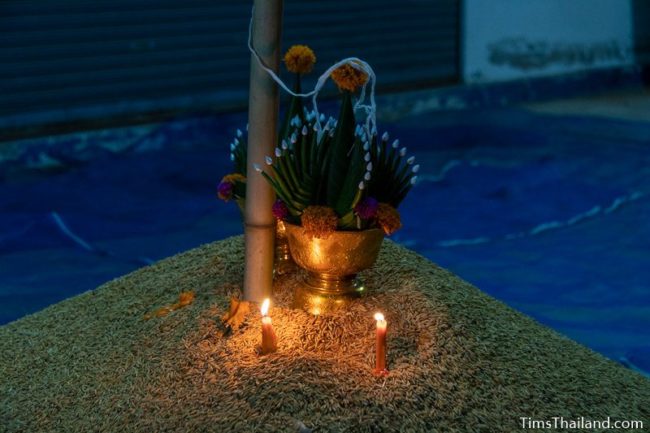
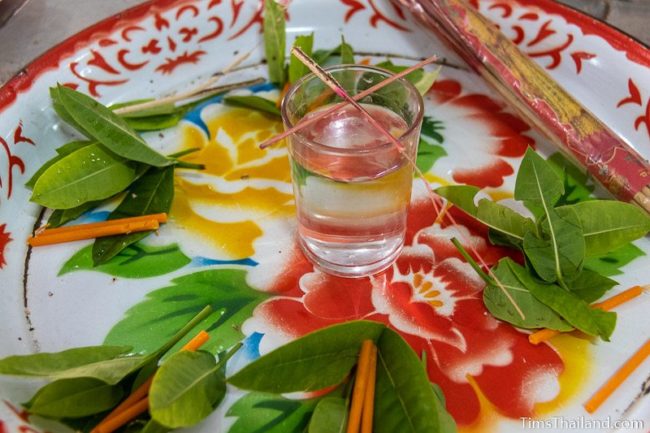
At 7.30pm the monks took the sai sin in their hands to tam kwan-khao: doing a half-hour of chanting to bless the rice spirits.
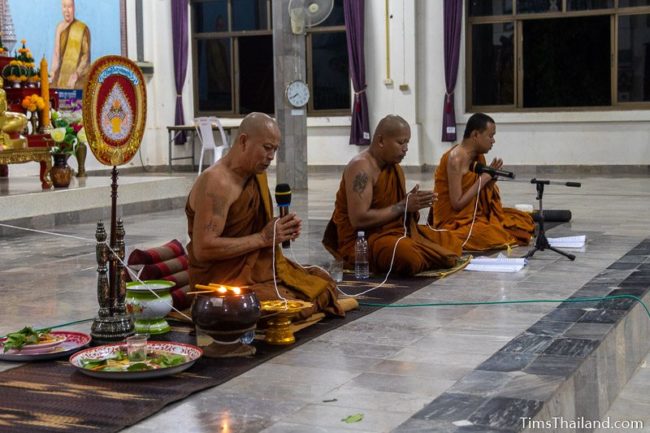
Then after a final fifteen minutes of further chanting the night was done, although a few people stayed behind a bit longer to set up the sala for the next morning’s ceremony.
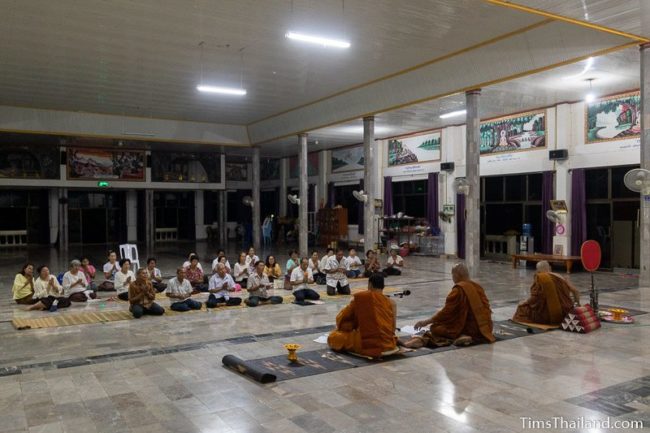
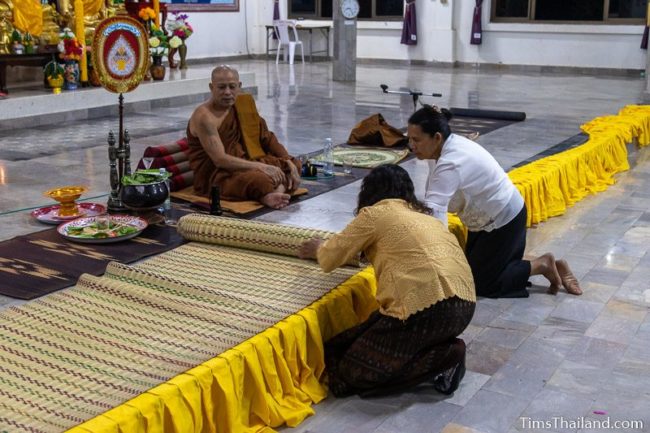
Boon Khao Jee
On the morning of Boon Khao Jee many families were up early, before 5am, to make khao jee (grilled sticky rice battered with egg), khao griap (grilled rice crackers), and the previously mentioned khao tom mat to give to the monks.
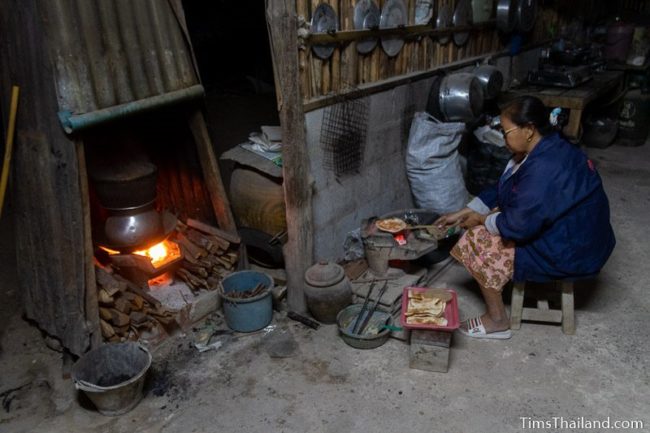
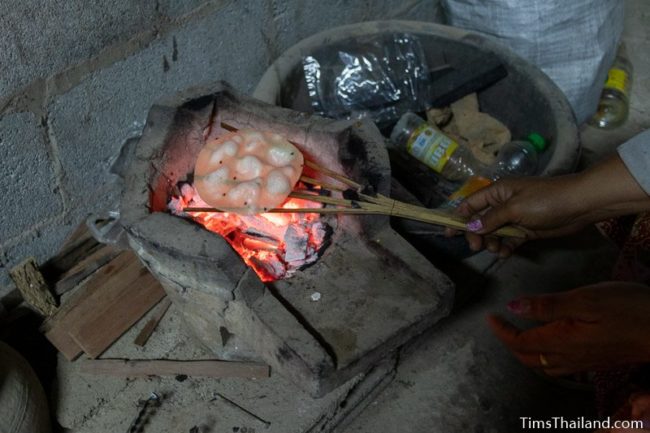
The monks of Wat Jan did not bin-ta-baht through the village that morning, instead people gave all their food at the temple. They started arriving at 6.30am and there were about 150 people in attendance. A few also brought more rice or money for the Boon Khun Lan pile.
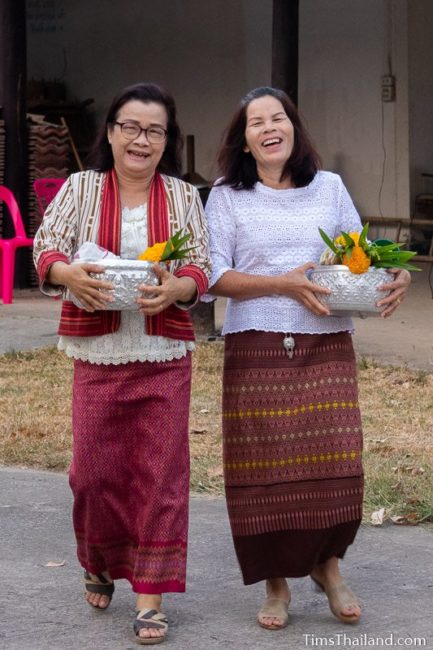
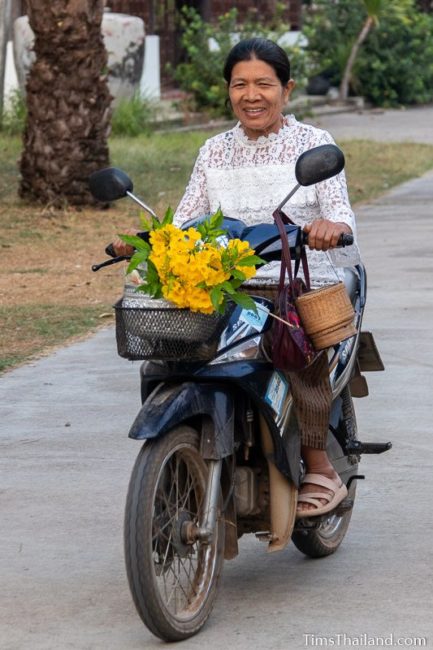
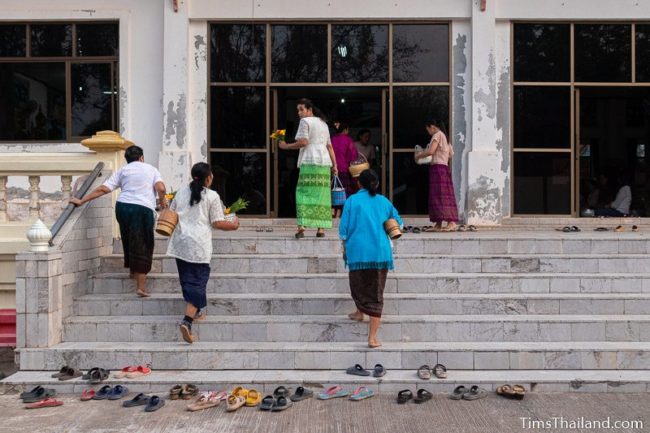
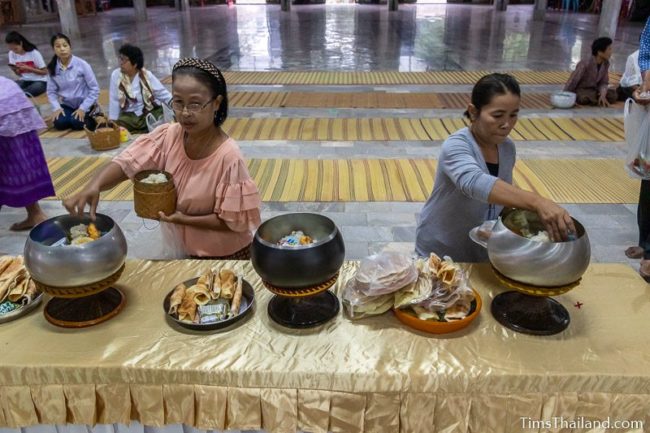
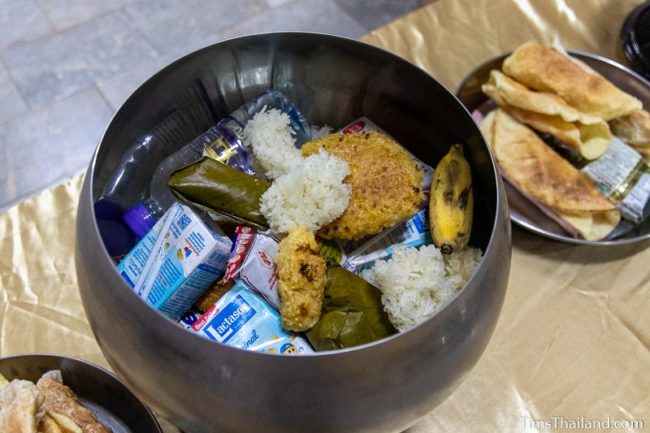
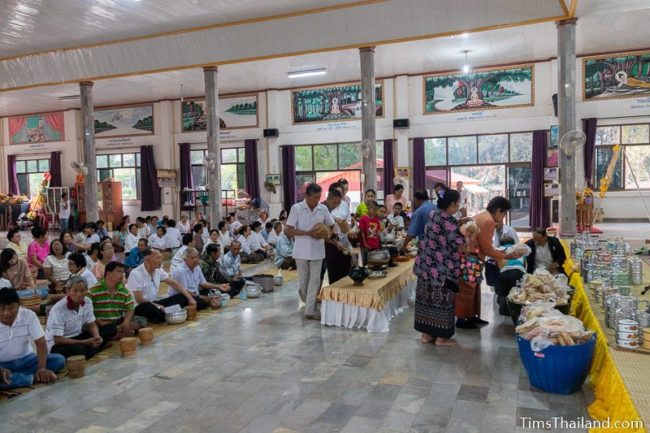
A few women outside the sala made merit by grilling and giving away khao jee and khao griap to anyone who wanted them. They were especially popular with kids.
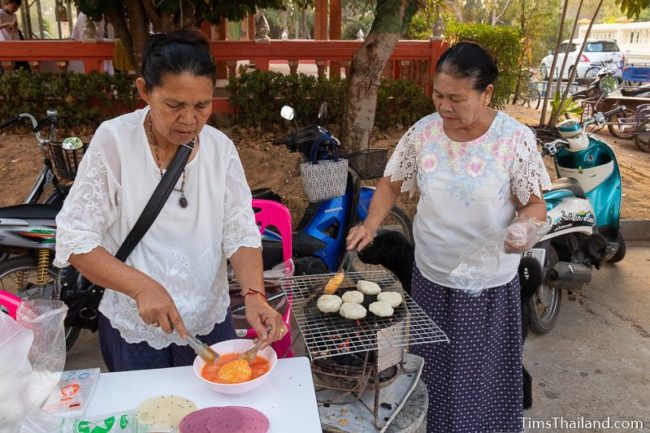
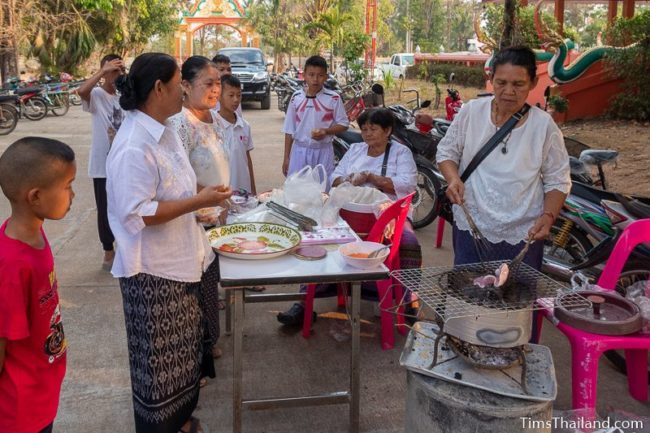
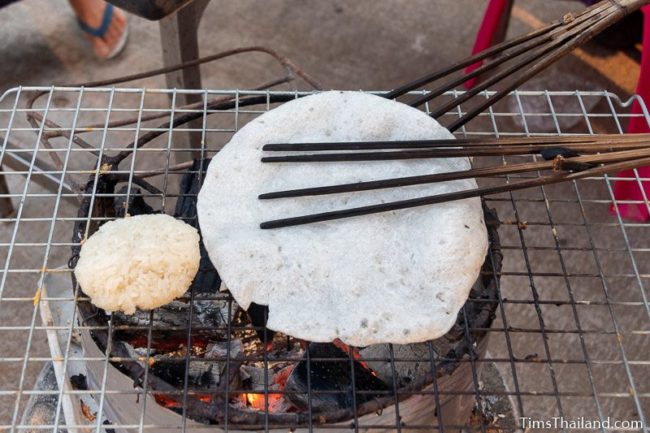
Boon Khao Jee chanting started just before 8am and at 8.15am the abbot held the sai sin for a few seconds to pass merit to ancestors and angels.
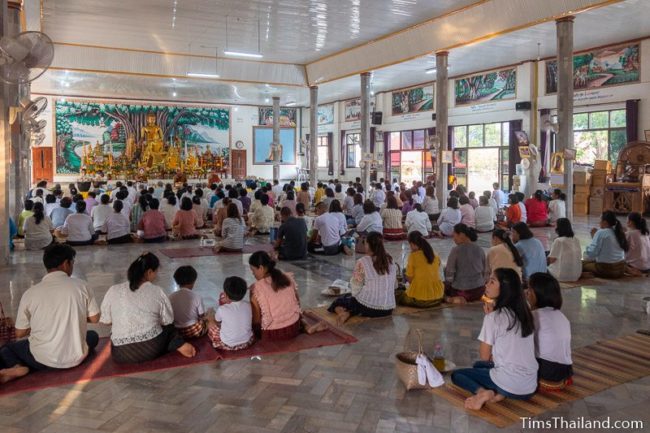
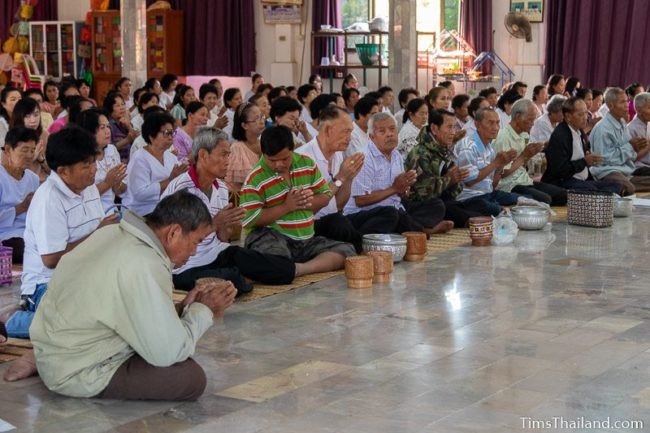
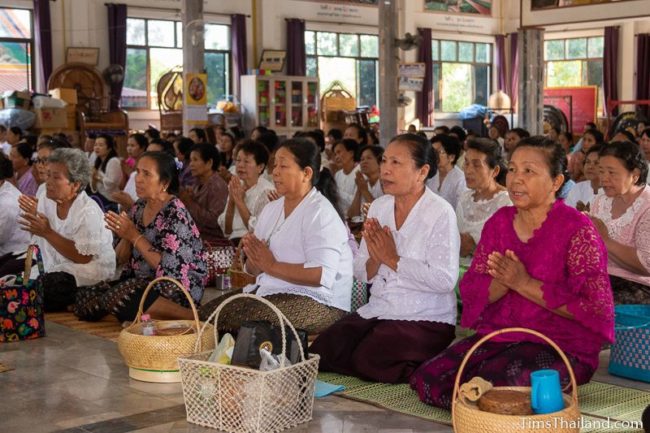
A few minutes later the gruat nam water (used to share merit with people’s ancestors) was blessed and then the abbot splashed holy water on the congregation to bless them.
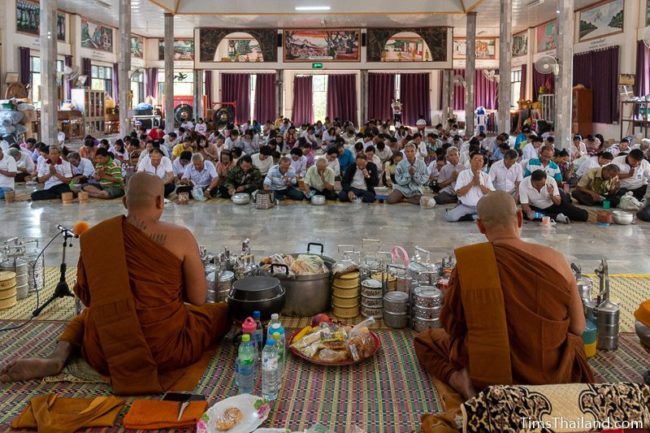
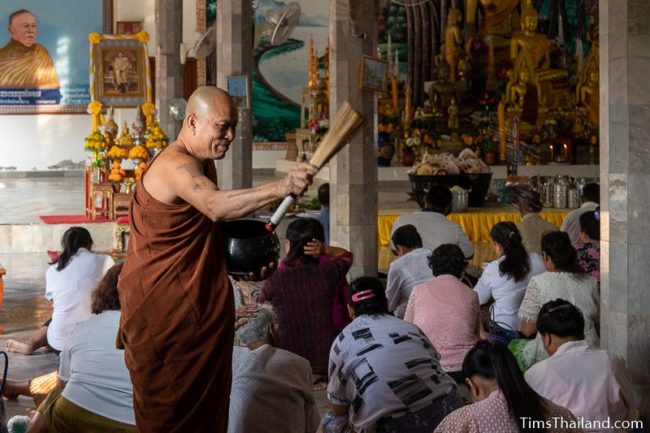
People went outside to pour their gruat nam holy water on a tree or other plant to pass on the merit, and then most people went home.
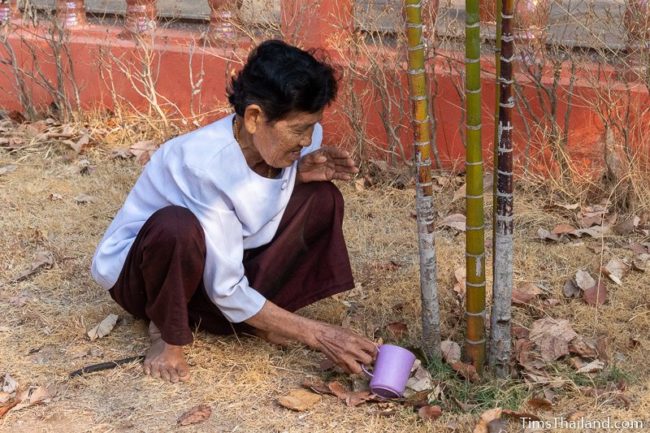
But about forty people stayed behind and chanted, led by a village elder, while the monks ate. During this time a woman handed out the three sticky rice stacks to people in the sala. By 9am, Boon Khao Jee was done.
Makha Bucha
Like most Isan temples, Wat Jan celebrates Boon Khao Jee on the same full-moon day as the important Buddhist festival Macha Bucha (honoring the day that the Buddha gave a sermon summarizing the principles of Buddhism to 1,250 enlightened disciples), though the two celebrations are not connected, it’s just convenient to do it this way.
During the day, after Boon Khao Jee is over, Wat Jan Ban Hua Na does a day of temple cleaning, recruiting village kids to help the monks and a few adults maintain the temple. It encourages kids to feel a part of and take some responsibility for their community. And after two and a half hours of sweeping leaves, picking up trash, and planting trees, each of the twenty-plus kids got 100B.
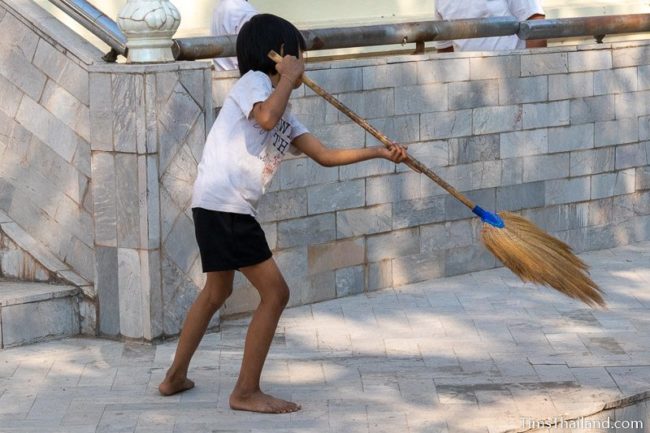
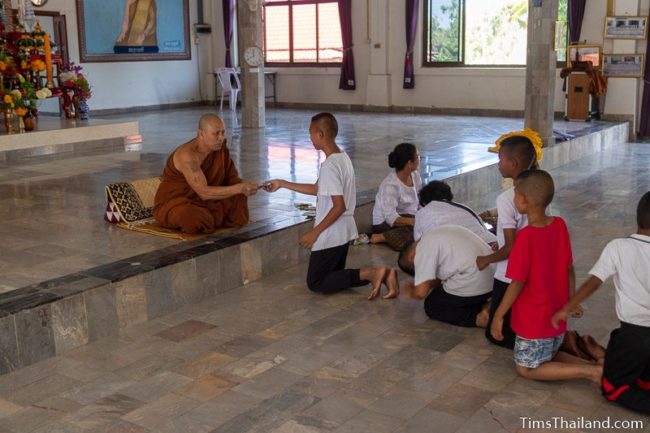
The actual celebration of Makha Bucha consisted of suat mon chants and prayers from 7.45pm to 8.30pm followed by a fifteen-minute wian tian candle procession three times around the stupa.
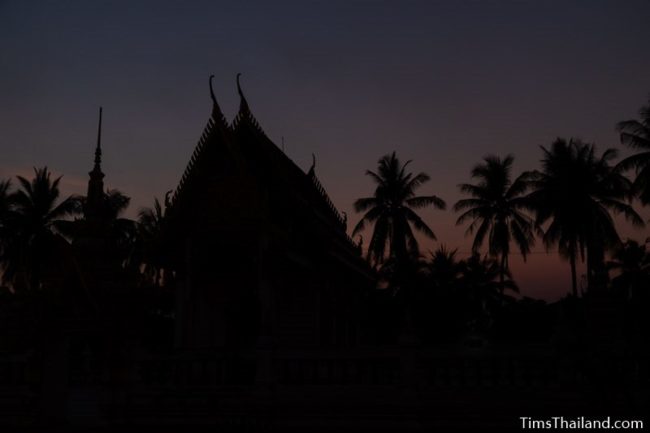
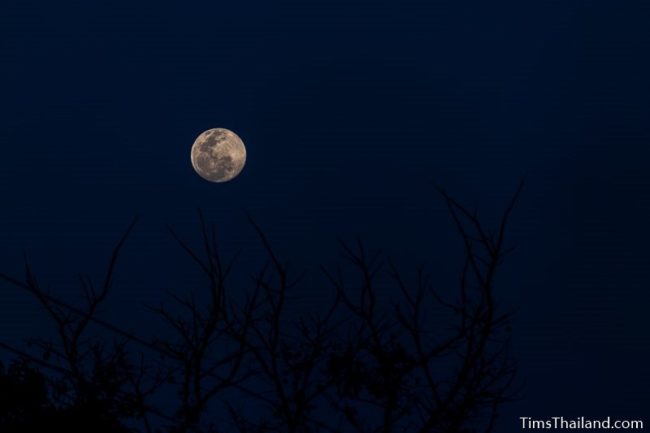
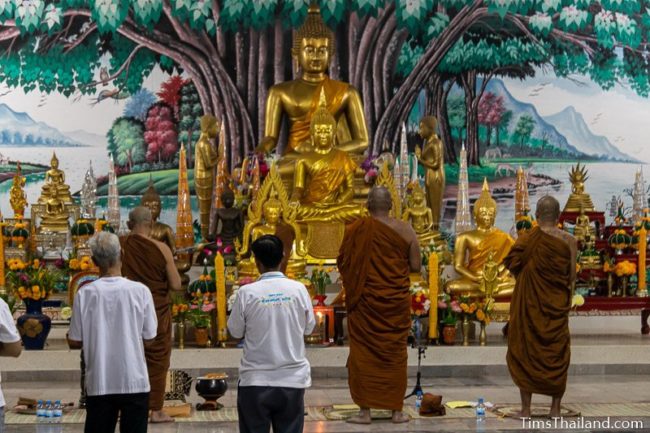
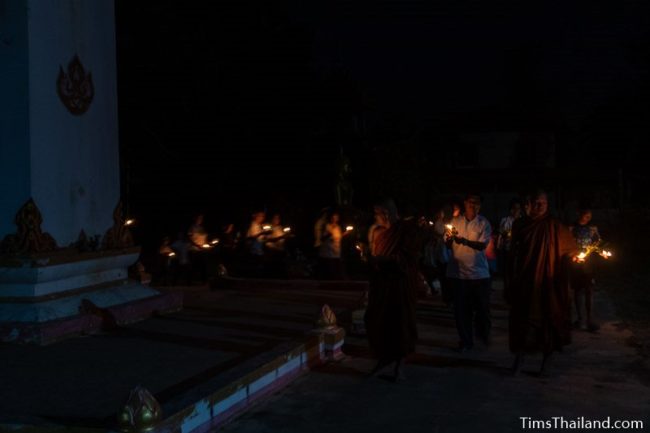
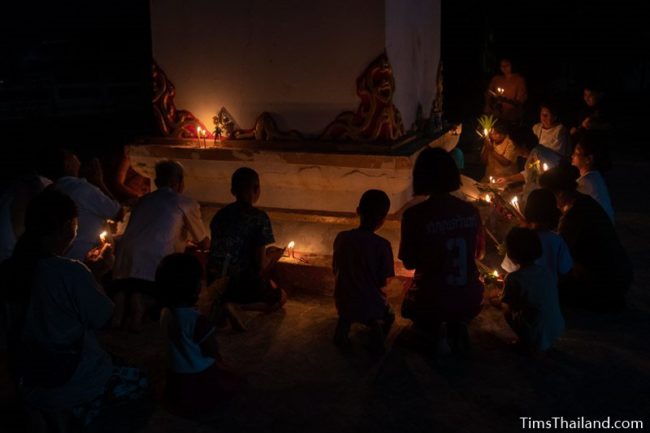
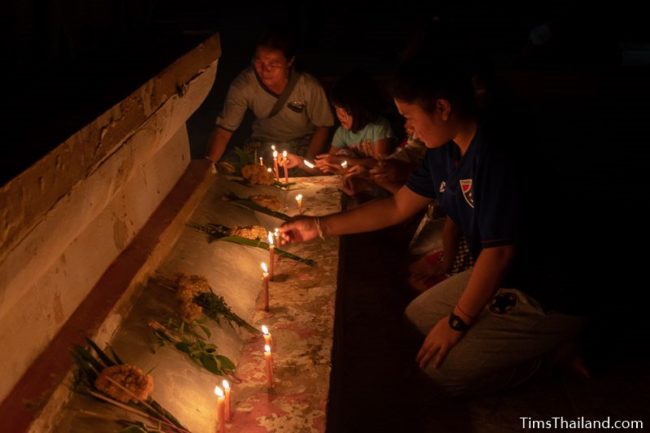
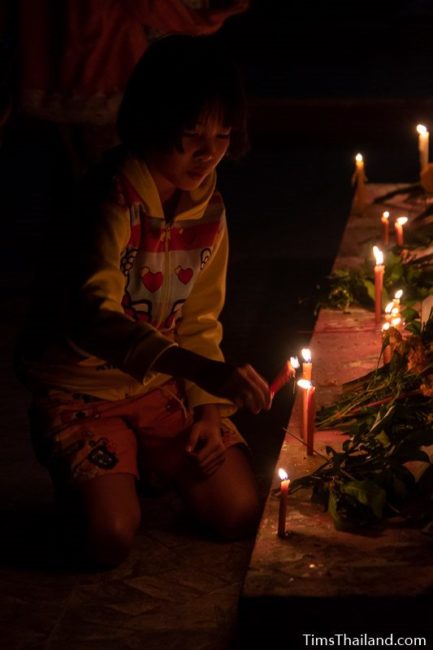
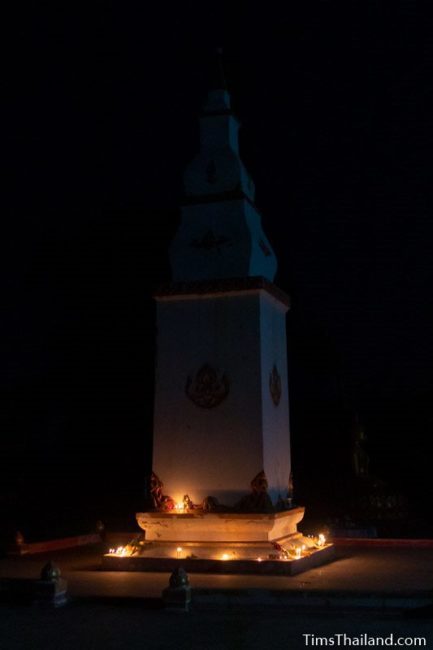
On this and other big Buddhist holidays, it’s normal for people to wear white and stay overnight at a temple and follow the eight precepts (no sexual activity, no entertainment, etc.), but the people of Ban Hua Na did this at a nearby forest temple instead of Wat Jan.
Boon Khao Kam (Month 1)
About Photo Essay
Boon Khun Lan (Month 2)
About Photo Essay
Boon Khao Jee (Month 3)
About Photo Essay
Boon Pha Wet (Month 4)
About Photo Essay
Boon Songkran (Month 5)
About Photo Essay
Boon Bang Fai (Month 6)
About Photo Essay
Boon Samha (Month 7)
About Photo Essay
Boon Khao Phansa (Month 8)
About Photo Essay
Boon Khao Pradap Din (Month 9)
About Photo Essay
Boon Khao Sak (Month 10)
About Photo Essay
Boon Ok Phansa (Month 11)
About Photo Essay
Boon Kathin (Month 12)
About Photo Essay